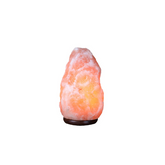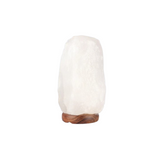Himalayan Salt for Respiratory Health: Inhalers and Steam
Himalayan Salt for Respiratory Health: Inhalers and Steam
Breathing comfortably is something many of us take for granted until congestion, allergies, or chronic conditions make it difficult. Himalayan salt has gained attention not only for its culinary uses but also for its role in respiratory health. From handheld salt inhalers to soothing steam therapy, this mineral-rich salt is believed to support clear airways and relaxation. But what does the science say, and how can you use it safely?
What Is Himalayan Salt Therapy?
Salt therapy, also called halotherapy, involves inhaling tiny salt particles to promote better breathing. Traditionally, this was practiced in natural salt caves in Eastern Europe, where people noticed improvements in conditions like asthma and bronchitis after spending time underground. Today, the practice has evolved into more convenient options such as Himalayan salt inhalers and steam treatments.
The appeal of Himalayan salt lies in its natural composition: over 80 trace minerals, including potassium, calcium, and magnesium, which are believed to contribute to wellness when inhaled or absorbed through the skin.
Benefits of Himalayan Salt Inhalers
1. Support for Asthma and Allergies
Using a Himalayan salt inhaler may help reduce irritation in the respiratory tract. Dry salt particles can absorb allergens, toxins, and moisture, potentially easing asthma, hay fever, or seasonal allergy symptoms.
2. Reducing Mucus and Congestion
Salt has natural moisture-absorbing properties. Inhalation may help thin mucus and clear airways, making breathing easier during colds or sinus infections.
3. Non-Invasive Relaxation
Unlike medication-based inhalers, salt inhalers are drug-free and safe for regular use, making them appealing for those seeking a natural respiratory aid.
Himalayan Salt Steam Therapy
Steam therapy is another traditional method that combines the soothing warmth of steam with the benefits of Himalayan salt.
How It Works
- Add 2–3 tablespoons of Himalayan salt to a bowl of hot water.
- Drape a towel over your head and lean over the bowl.
- Inhale the warm, mineral-rich steam for 10–15 minutes.
This method helps:
- Moisturize dry nasal passages.
- Loosen phlegm.
- Ease irritation from bronchitis, sinus infections, or colds.
Science Behind Salt and Respiratory Health
Several studies suggest that halotherapy can improve lung function, especially in patients with chronic obstructive pulmonary disease (COPD) and asthma. For example:
- A review in the Journal of Aerosol Medicine and Pulmonary Drug Delivery highlighted that inhaled salt particles may reduce inflammation and improve mucus clearance.
- The American Lung Association notes that while more research is needed, many patients report subjective improvements in breathing and quality of life after salt therapy.
How to Use Himalayan Salt for Respiratory Support
Salt Inhaler
- Use for 10–20 minutes per day.
- Take slow, deep breaths through the mouthpiece.
- Replace salt every 90 days for effectiveness.
Salt Steam
- Ideal for temporary relief from colds or congestion.
- Avoid water that is too hot to prevent burns.
Salt Rooms (Optional)
Some spas and wellness centers offer salt rooms, where fine salt particles are dispersed into the air for 30–45 minutes.
Safety Considerations
- Not a substitute for medication: Always consult your healthcare provider before replacing prescribed treatments.
- Asthma caution: Some individuals may find salt particles irritating during acute asthma attacks.
- Hydration: Inhaled salt can be drying, so drink water afterward.
Himalayan Salt vs. Other Respiratory Remedies
| Method | Pros | Cons | Best For |
|---|---|---|---|
| Himalayan Salt Inhaler | Natural, reusable, drug-free | Limited clinical research | Asthma, allergies, daily support |
| Salt Steam Therapy | Moisturizing, soothing, inexpensive | Short-term relief only | Colds, sinus congestion |
| Prescription Inhalers | Clinically proven, fast-acting | Potential side effects | Chronic asthma, COPD |
| Salt Rooms | Relaxing, spa-like experience | Expensive, not widely available | Wellness seekers |
Conclusion
Himalayan salt inhalers and steam therapy offer a natural, accessible way to support respiratory health. While they may not replace medical treatments, many people find them beneficial for easing congestion, promoting relaxation, and supporting clearer breathing. If you’re looking for complementary wellness practices, salt therapy could be worth exploring especially during cold seasons or allergy flare-ups.





